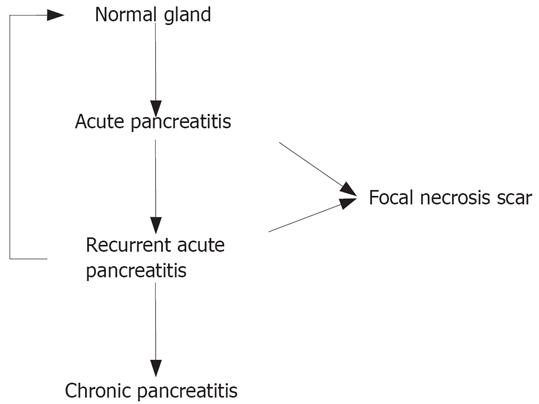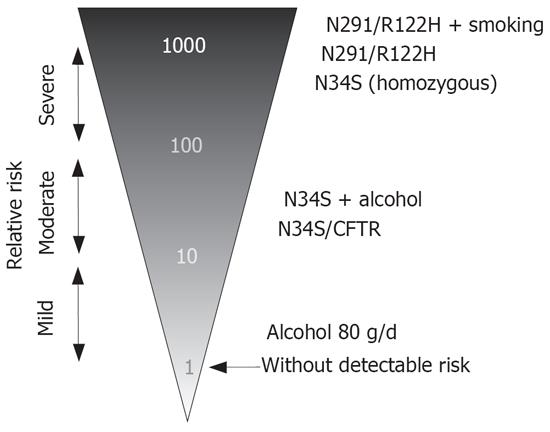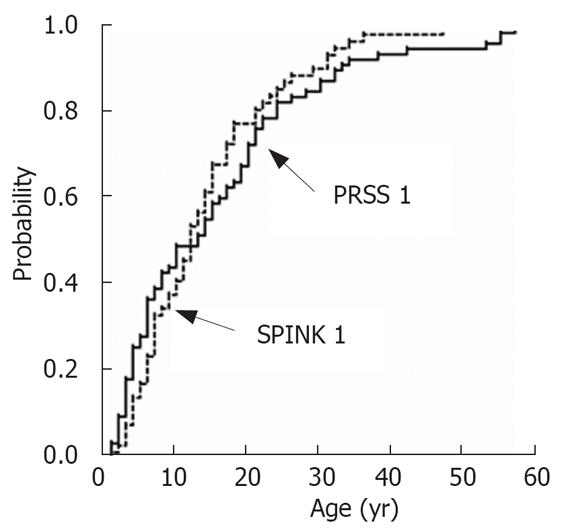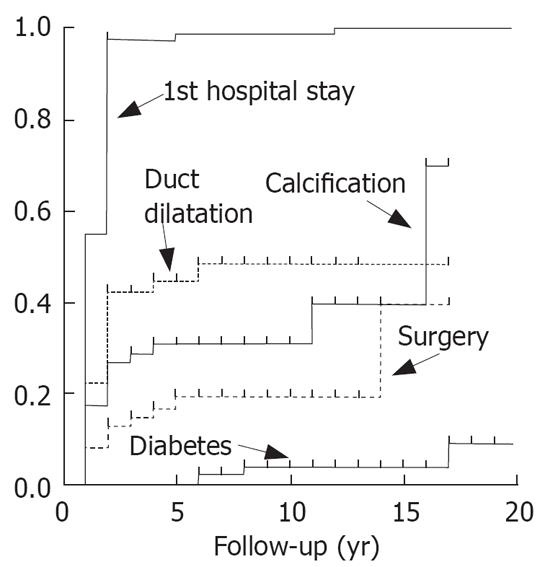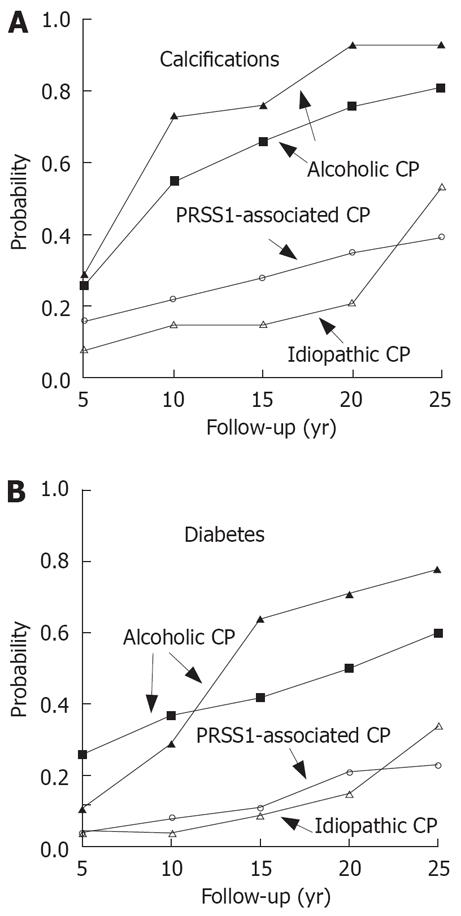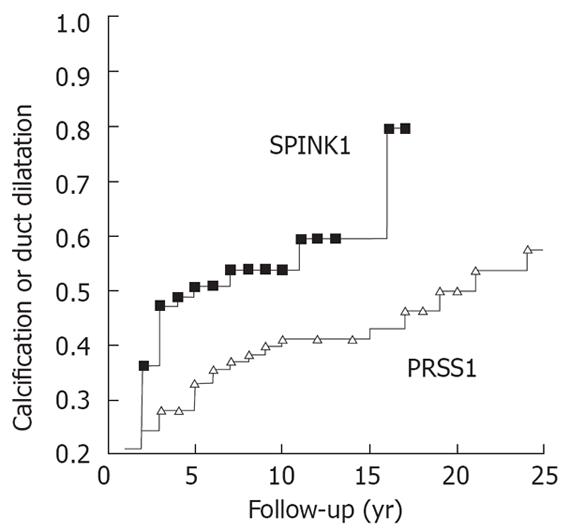Copyright
©2008 The WJG Press and Baishideng.
World J Gastroenterol. Feb 21, 2008; 14(7): 1011-1015
Published online Feb 21, 2008. doi: 10.3748/wjg.14.1011
Published online Feb 21, 2008. doi: 10.3748/wjg.14.1011
Figure 1 Relationship between acute, acute-recurrent and chronic pancreatitis.
Figure 2 Strength of genetic and environmental risk factors of chronic pancreatitis.
Figure 3 Age at onset of pancreatitis in patients with mutations N29I and R122H of the cationic trypsinogen and mutation N34S of SPINK1.
Figure 4 Progression of pancreatitis in patients with PRSS1 mutations N29I and R122H.
Figure 5 Progression of pancreatitis in patients with mutation N34S of SPINK1.
Figure 6 Progression of pancreatitis in patients with alcoholic, idopathic or PRSS1-induced disease.
Figure 7 Probability of either calcification or duct dilatation in patients with N34S mutation of SPINK1.
- Citation: Keim V. Role of genetic disorders in acute recurrent pancreatitis. World J Gastroenterol 2008; 14(7): 1011-1015
- URL: https://www.wjgnet.com/1007-9327/full/v14/i7/1011.htm
- DOI: https://dx.doi.org/10.3748/wjg.14.1011









